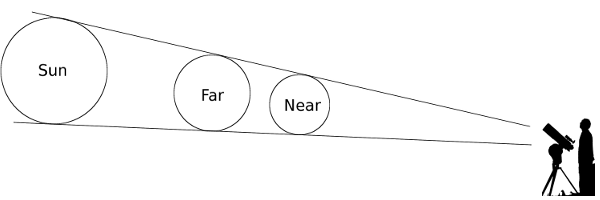
I am watching a double solar eclipse. The heavenly body Far, traveling east, passes before the sun. Beneath it passes the smaller body Near, traveling west. Far and Near appear to be the same size from my vantage point. Which do I see?
Common sense says that I see Near, since it’s closer. But Washington University philosopher Roy Sorensen argues that in fact I see Far. Near’s existence has no effect on the pattern of light that reaches my eyes. It’s not a cause of what I’m seeing; the view would be the same without it. (Imagine, for example, that Far were much larger and Near was lost in its shadow.)
“When objects are back-lit and are seen by virtue of their silhouettes, the principles of occlusion are reversed,” Sorensen concludes. “In back-lit conditions, I can hide a small suitcase by placing a large suitcase behind it.”
See In the Dark.
(Roy Sorensen, “Seeing Intersecting Eclipses,” Journal of Philosophy XCVI, 1 (1999): 25-49.)
